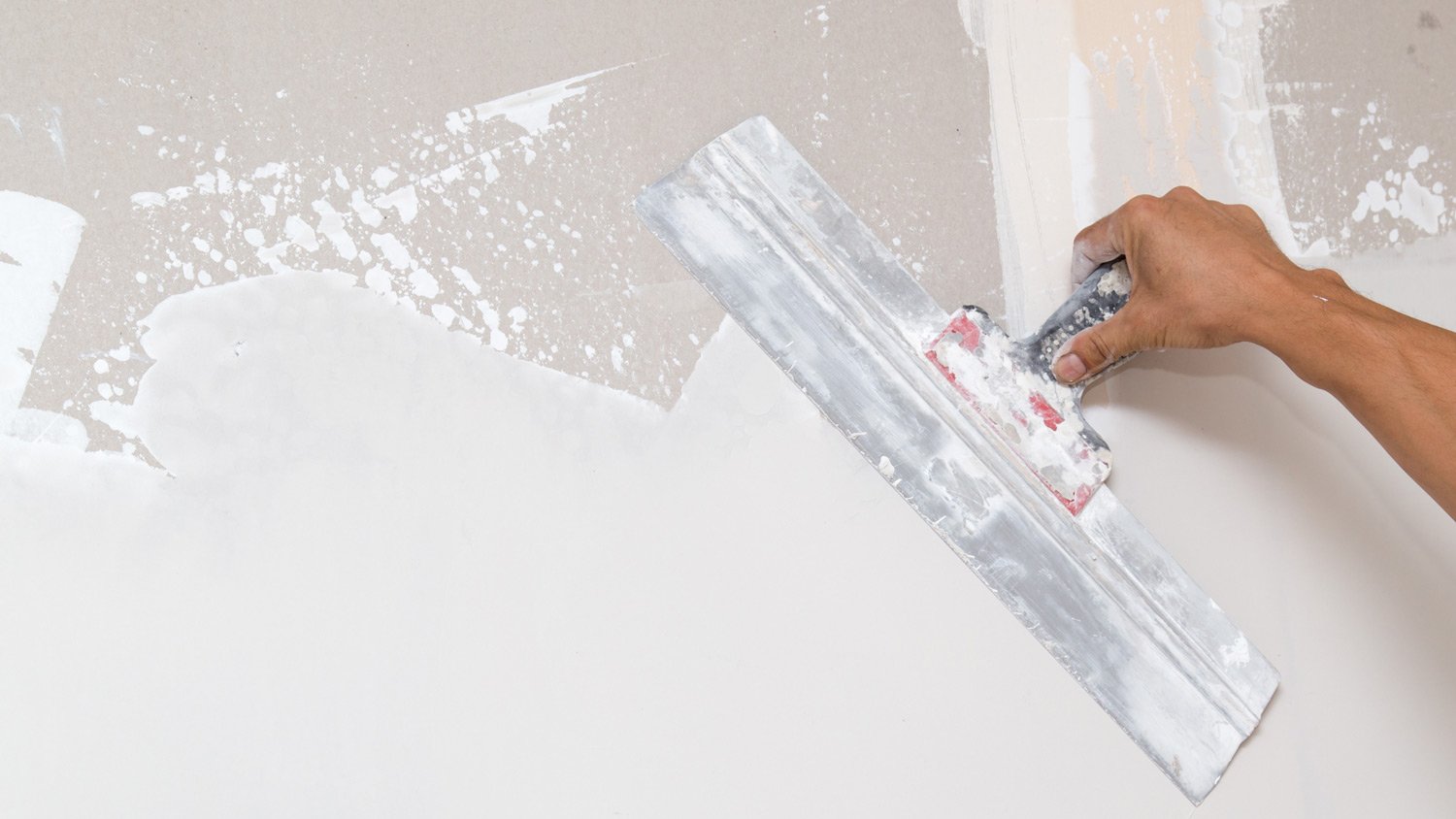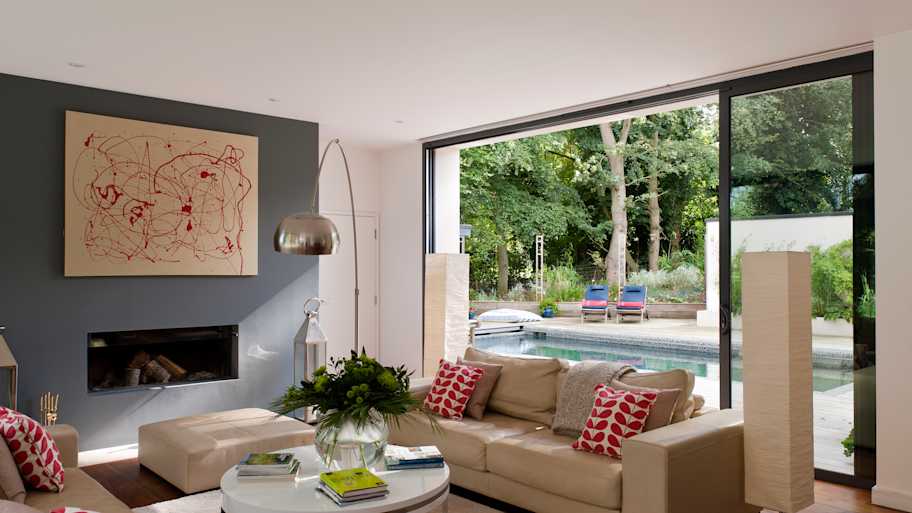
The cost of plastering walls and ceilings depends on the room size and ceiling height. Our tips can help you estimate an accurate cost.
Patch that pesky plaster crack with a few simple tricks


While hiring a pro to repair cracks in plaster walls costs between $90 and $180, the job will be done safely and quickly.
Plaster crack repair is a difficult DIY because it’s easy to make a mistake and spend longer than anticipated.
If you have any cracks wider than 1/4 inch, working with a plaster repair specialist is important, as there may be structural issues that require their expertise.
Cracked plaster can catch the eye—but not in a good way. While cracks along plaster walls aren’t always dangerous, they can seriously clash with your room’s aesthetic. To repair cracked plaster walls, you can use joint compound, drywall tape, or a store-bought flexible filler product. Here’s how to fix cracks in plaster walls in three easy ways.
Cracks that are more than 1/4-inch wide could indicate structural damage. Otherwise, cracks can form as a result of natural shifting over time, temperature changes, or normal shrinkage during the drying process. Small cracks are rarely cause for concern, but reach out to a local structural engineer if your cracks are constantly getting wider or longer out of nowhere.
The most common way to repair cracks in plaster walls is to use joint compound. This “mud” will help fill in the crack and any other imperfections, creating a smooth surface that you can paint on top of later. To fix cracks in plaster walls with joint compound, you need to:
Slightly widen the crack with a utility knife and dust off any loose pieces.
Spread the joint compound with a putty knife or drywall knife.
Let the joint compound dry for 24 hours.
Apply another layer and let it dry for another 24 hours.
Sand down the surface to prepare for paint.

If the crack is a bit wider than a hairline crack but not as wide as 1/4 inch, you’ll want to add drywall tape to patch the crack in the plaster before using joint compound. This helps fully cover the crack, so it will be completely disguised after you repair the wall.
Cut a strip of drywall tape that extends slightly past the length of the crack. You may need multiple pieces of tape if the crack splinters along the wall. Afterward, you can follow the process of applying joint compound over the tape to smooth out the wall.
If the thinnest plaster cracks bother you, you can fill them in using a commercial flexible filler. This product is similar to caulk and helps fill the crack while still offering some flexibility since plaster can naturally shift and settle over time.
Use flexible filler and a caulk gun to fill the hairline crack according to the label’s instructions. Use a putty knife or filler knife to smooth the filler into the crack, then let it dry. Then, you can paint over the crack to finish the repair.

Learning how to fix cracks in plaster walls is an easy process, even for beginner DIYers. However, there are some common mistakes to watch out for when you’re getting started.
Filling cracks that are too large: Cracks wider than 1/4 inch can be a sign of structural damage or other issues. Call a pro to inspect before just filling in the crack.
Painting over cracks: Just painting over damaged plaster won’t do much to disguise the crack. The crack will show through the paint within a few months.
Not waiting for joint compound to dry: Joint compound needs at least 24 hours to dry, and it will need even more if your home is humid. If you sand or paint prematurely, the joint compound won’t be smooth, and the paint will bubble or peel.
Not cleaning and widening the crack: It seems weird to widen the crack before applying joint compound, but it’s a necessary step for the joint compound to fill and adhere to the opening.
Applying joint compound in thick layers: It’s best to be patient and apply one thin layer of joint compound at a time rather than applying a thick layer. Thick layers can cause an uneven wall surface or even lead to more cracks.
Skipping the sanding: You may be in a rush to paint, but make sure that you sand the joint compound down to disguise the repaired crack and create the smoothest possible surface for painting.
If you’re worried about making a mistake or simply don’t want to spend a weekend watching mud dry, consider hiring a plaster repair pro near you.
If you do decide to cover up smaller cracks in the plaster, it’s important to do so when the weather is not too humid or too dry and when the temperature isn’t too hot or cold. Keep the humidity in the room at 60% to 70% using a humidifier or dehumidifier, depending on your local climate. Make sure the room temperature is around 64 to 77 degrees Fahrenheit.
Plaster tends to crack from temperature and humidity fluctuations, so choosing optimal temperature and humidity levels when repairing plaster is important to prevent more cracking or an uneven finish.
Plaster can be expensive to repair. Since drywall is less costly, takes less time to dry, and looks exactly like plaster when repairs are done properly, companies often use drywall to repair plaster to help homeowners save money.
DIY plaster crack repairs cost $5 to $15 for about 1.75 pints to 1 gallon of joint compound, $3 to $10 for a roll of drywall tape, and $3 to $10 for sandpaper. You’ll also spend $30 to $80 per gallon for primer and paint to finish concealing the crack (unless you have paint left over from your last project).
By comparison, pro plaster repair costs for fixing a crack are around $90 to $180, depending on the length of the crack. For any cracks wider than 1/4 inch, always hire a pro. These could be signs of structural issues that need expert attention.
From average costs to expert advice, get all the answers you need to get your job done.

The cost of plastering walls and ceilings depends on the room size and ceiling height. Our tips can help you estimate an accurate cost.

The eye-catching character of a coffered ceiling can really set your room design apart. This guide breaks down coffered ceiling costs to help you budget.

Venetian plaster can add depth and texture to your aesthetic. Learn how much Venetian plaster costs based on factors like square footage and whether you hire a pro to help.

While some ceiling noises are normal, others can indicate a much larger issue. This article translates snaps, crackles, and pops into potential causes and solutions.

Knowing how to find a ceiling joist is necessary for homeowners looking to install fixtures or hang heavy objects from the ceiling.

Find out what causes ceiling cracks, including general wear and tear, water damage, roof truss uplift, and issues with your foundation.